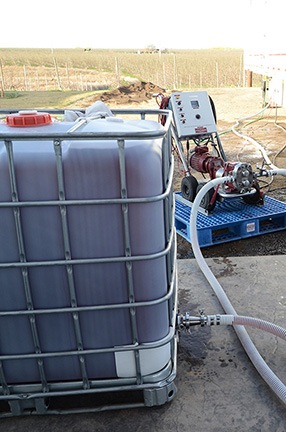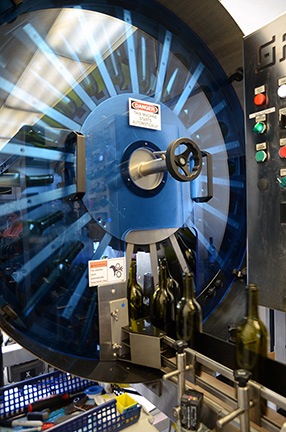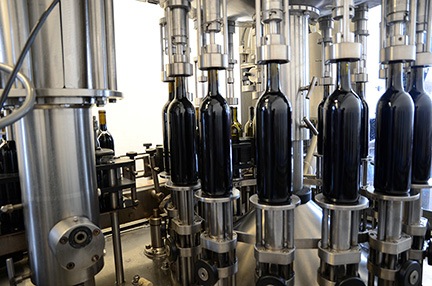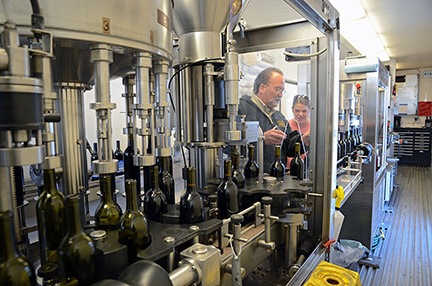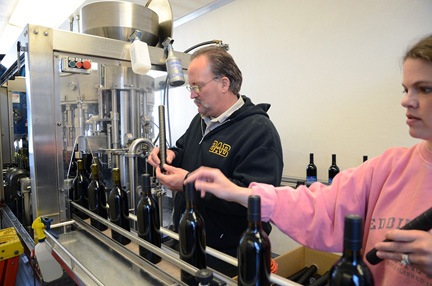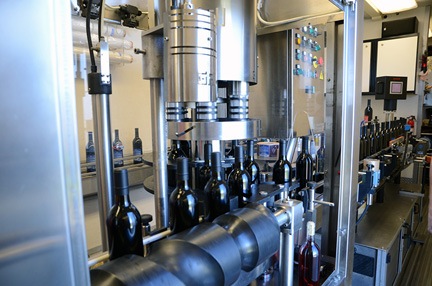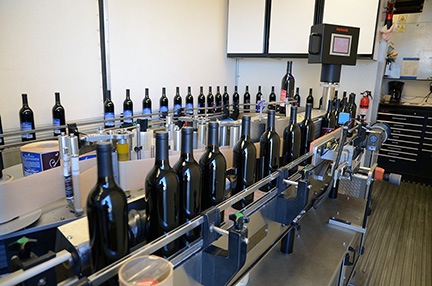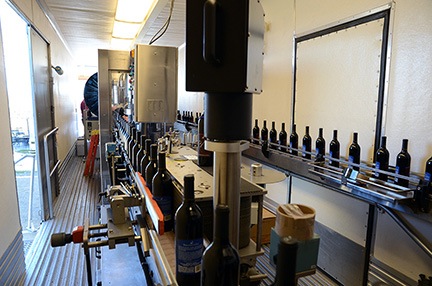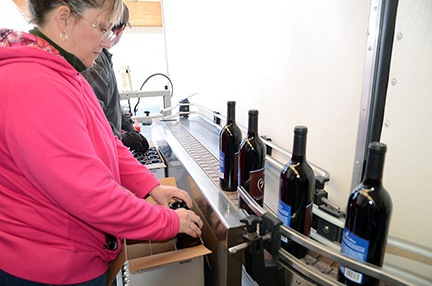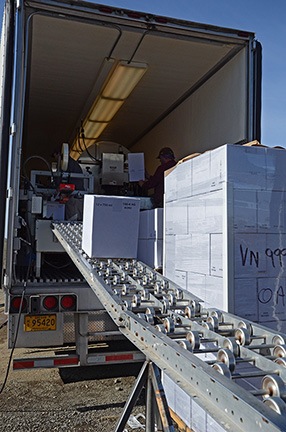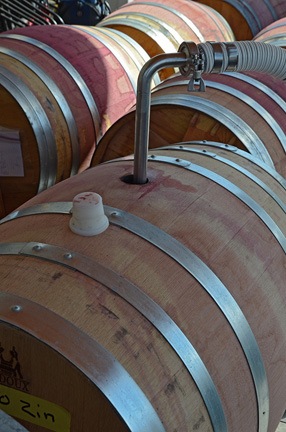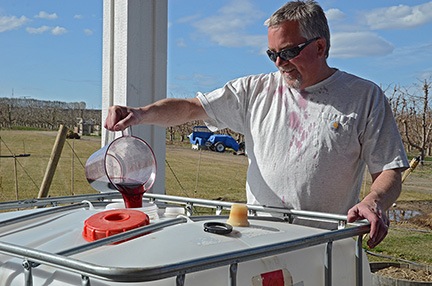Removing a swarm of bees is easy — if you know what you’re doing and aren’t afraid to get stung.
 The text message from my friend Pete arrived just as I was trying to think of another way to procrastinate:
The text message from my friend Pete arrived just as I was trying to think of another way to procrastinate:
Bees swarming on the shop. Bee man is going to come get them.
A cell phone image accompanied the text. It showed a roof eaves absolutely littered with bees.
A while later, I was at my friend’s farm, watching the bee man set up. He was an older man who’d likely been doing his job for quite some time. He was dressed in a loose-fitting, white coverall that was tight at his wrists and ankles. An attached hood with mesh mask hung at his back. He’d arrived in a flatbed truck towing a forklift on a trailer.
 When I arrived, he was placing a wooden door atop a fruit crate on a forklift, forming an elevated table. He placed a white box atop that and raised the apparatus about four feet off the ground, right beneath the bee swarm. The bees looked even more impressive live. Pete, three of his sons, and two of his older son’s friends stood a good fifty feet away, watching.
When I arrived, he was placing a wooden door atop a fruit crate on a forklift, forming an elevated table. He placed a white box atop that and raised the apparatus about four feet off the ground, right beneath the bee swarm. The bees looked even more impressive live. Pete, three of his sons, and two of his older son’s friends stood a good fifty feet away, watching.
The bee man explained that the bees were swarmed around a queen and that they’d likely decided to settle there. It was pretty obvious that they needed to be removed.
While folks in cities might call an exterminator, here in farm country, bees have real value. The “bee man” was a beekeeper who not only made honey but rented his bees out to farmers for pollination. In fact, Pete had a few dozen of his hives out by his apple trees. The bee man would take the bees home and set them up with their own bee hive boxes. Pete might see them again next year in more controlled conditions.
 When Pete made it clear that he wasn’t interested in sitting on the forklift to lift the bee man and his box up to the swarm, the bee man fetched his forklift off the trailer and parked it beside Pete’s. He then raised the two sets of forks and climbed up beside the box.
When Pete made it clear that he wasn’t interested in sitting on the forklift to lift the bee man and his box up to the swarm, the bee man fetched his forklift off the trailer and parked it beside Pete’s. He then raised the two sets of forks and climbed up beside the box.
And then, as we watched, he used his bare hand to scrape the bees off the eaves and into the box.
“These bees are very calm,” he said.

 He wasn’t kidding. He continued to sweep them down toward the box with his hand and, later, a stick. Although everyone else kept their distance, I got closer and closer with my camera. Soon I was standing on a third forklift parked inside the shop, not eight feet from the swarm and box, snapping photos.
He wasn’t kidding. He continued to sweep them down toward the box with his hand and, later, a stick. Although everyone else kept their distance, I got closer and closer with my camera. Soon I was standing on a third forklift parked inside the shop, not eight feet from the swarm and box, snapping photos.
 I wasn’t the only one taking photos. The bee man climbed down, went to his truck, and came back with his iPhone. He then climbed back up the forklift and used the phone to take a closeup photo of the bees. I’m wondering if his shot ended up on Facebook.
I wasn’t the only one taking photos. The bee man climbed down, went to his truck, and came back with his iPhone. He then climbed back up the forklift and used the phone to take a closeup photo of the bees. I’m wondering if his shot ended up on Facebook.


It took quite a while — at least 30 minutes. The bee man was very patient. One by one, most of his other spectators wandered off. He was sure he’d gotten the queen in the box, but the rest of the bees were taking their time joining her.
After a while, he got out his smoker, torched the burlap piece inside, and used smoke to coax the bees into the box. He explained that the smoke makes the bees think there’s a fire so they go into the hive to eat honey in case its lost. They then get sleepy from eating so much. Didn’t sound quite right to me, but what do I know?
 When he had most of the bees in the box, he covered it up, carried it back to his truck, and strapped it down on the flat bed. He pulled his forklift back onto its trailer and got ready to leave — but not before he gave Pete a plastic gallon jug of honey in exchange for two of Pete’s bottles of wine.
When he had most of the bees in the box, he covered it up, carried it back to his truck, and strapped it down on the flat bed. He pulled his forklift back onto its trailer and got ready to leave — but not before he gave Pete a plastic gallon jug of honey in exchange for two of Pete’s bottles of wine.
I’d enjoyed the show and was glad I’d gotten that text message.

